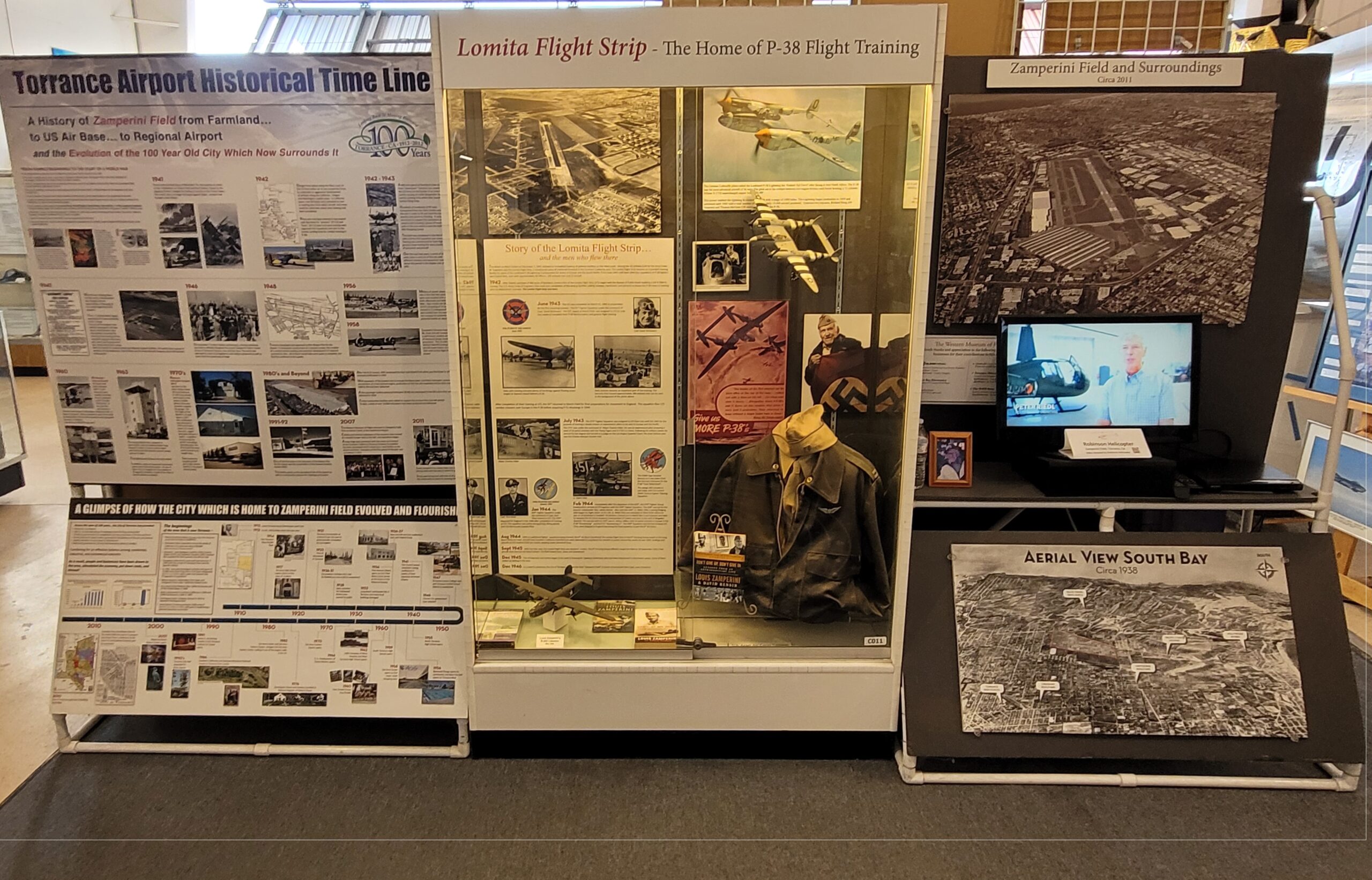Lomita Flight Strip
In 1941, the U.S. Bureau of Public Roads purchased 480 acres of the Weston Ranch property in what was then Lomita and developed the Lomita Flight Strip as an emergency landing field for military aircraft and a program to encourage civil air transportation projects. Following Pearl Harbor, all civil aviation within 200 miles of the Pacific Coast was shut down, and many existing facilities were adapted for military uses.
In 1942, the U.S. Corps of Engineers took over the air strip, adding barracks and other military buildings, and the Lomita Flight Strip was born. It would became an important training facility for P-38 and P-51 fighter pilots preparing for duty in the South Pacific. From June 1942 until April 1944, Army Air Corps squadrons would practice for warfare by flying around the South Bay coast and strafing the Pacific Ocean in training runs.
Following the end of World War II, the Lomita Flight Strip in Torrance was utilized to provide temporary housing for 125 Japanese-Americans returning from internment camps.
The Army vacated the facility in early 1946, and ownership of what is now Torrance Municipal Airport was granted by the War Assets Administration to the city of Torrance after World War II. On December 7, 1946 Torrance Airport was named, Zamperini Field after Torrance High athletic legend and World War II hero, Louis Zamperini.
Zamperini Field is home to Robinson Helicopter Company. Their entire production, assembly, and testing facilities are on the southeast side of the airfield and are the largest buildings at the field.
Zamperini Field is a public airport that primarily serves general aviation purposes.





